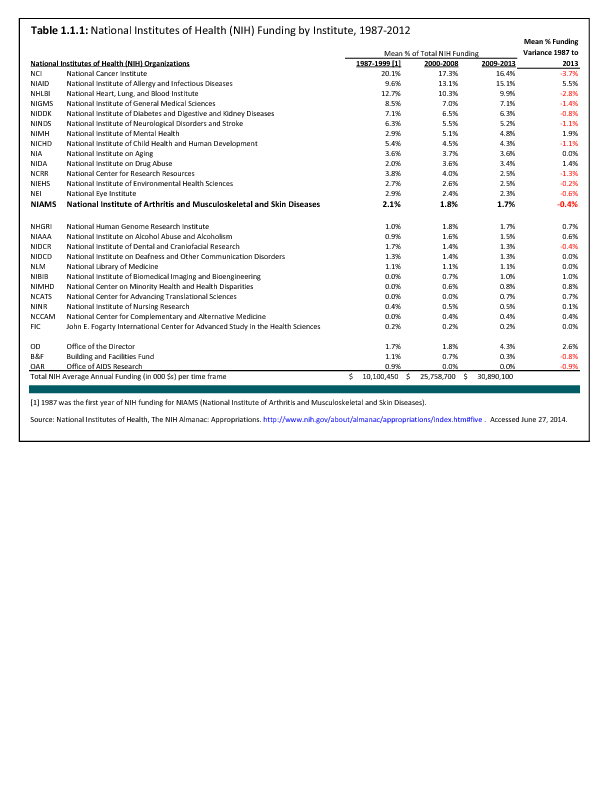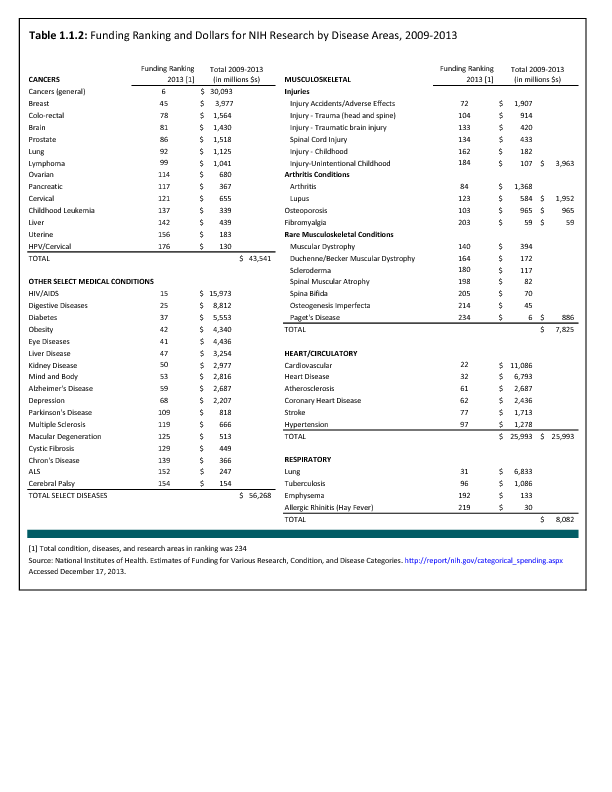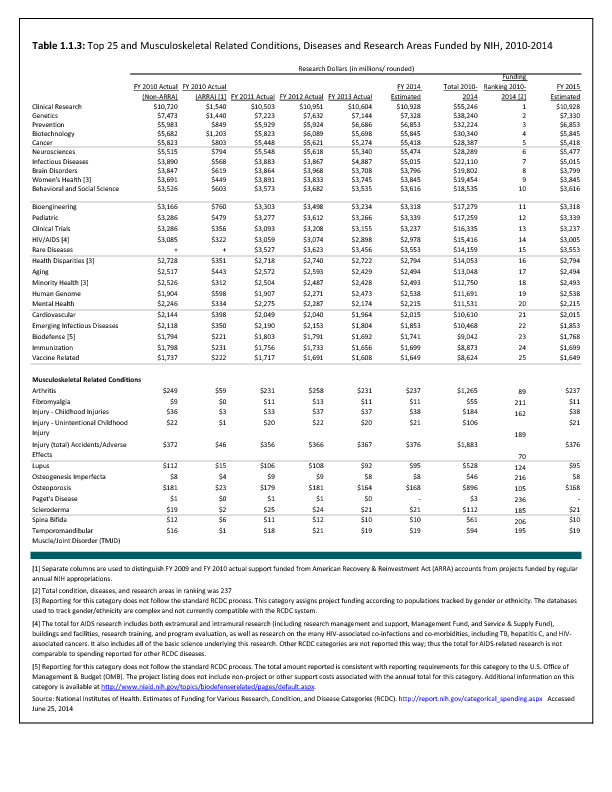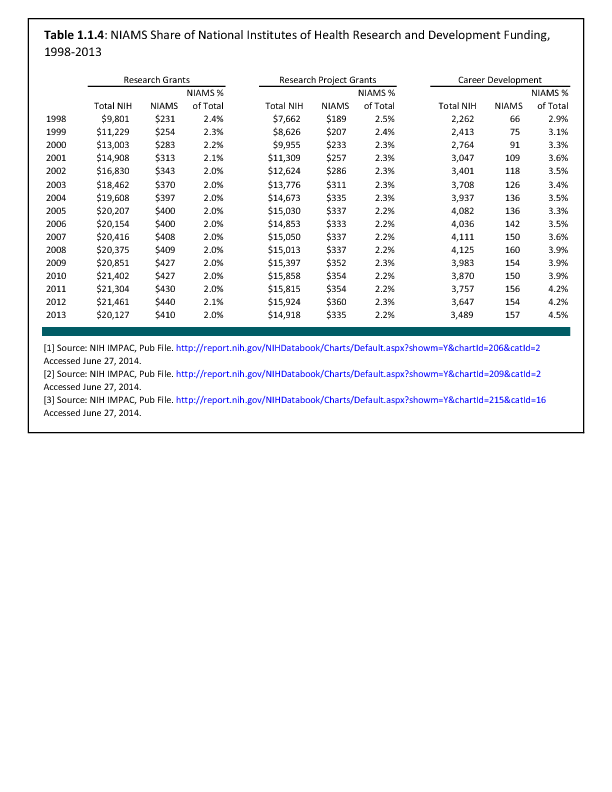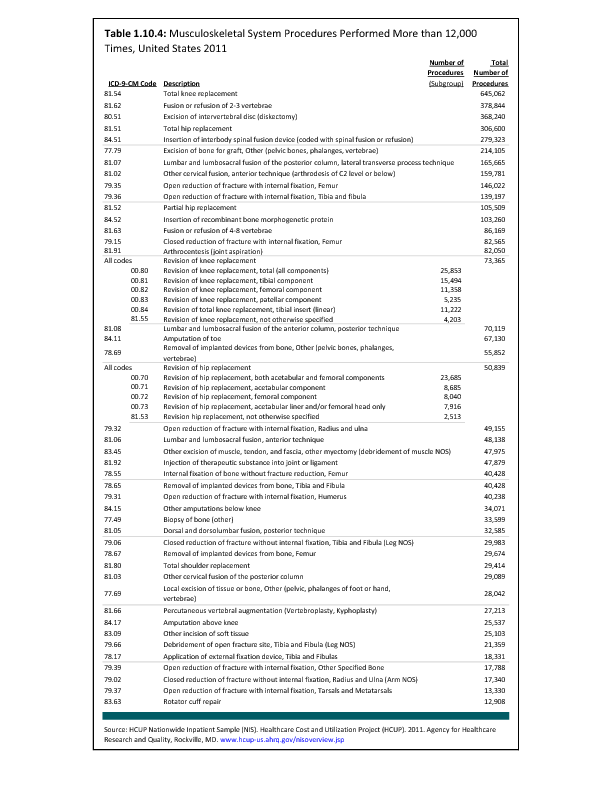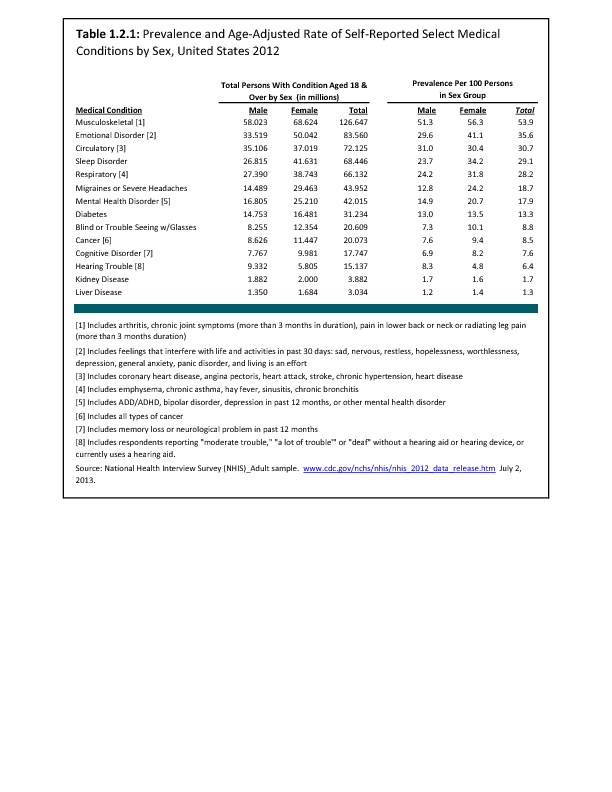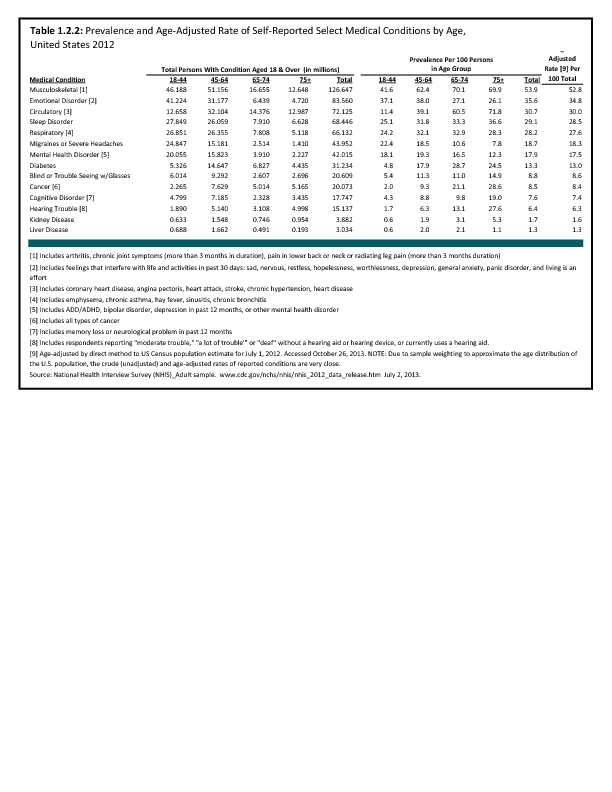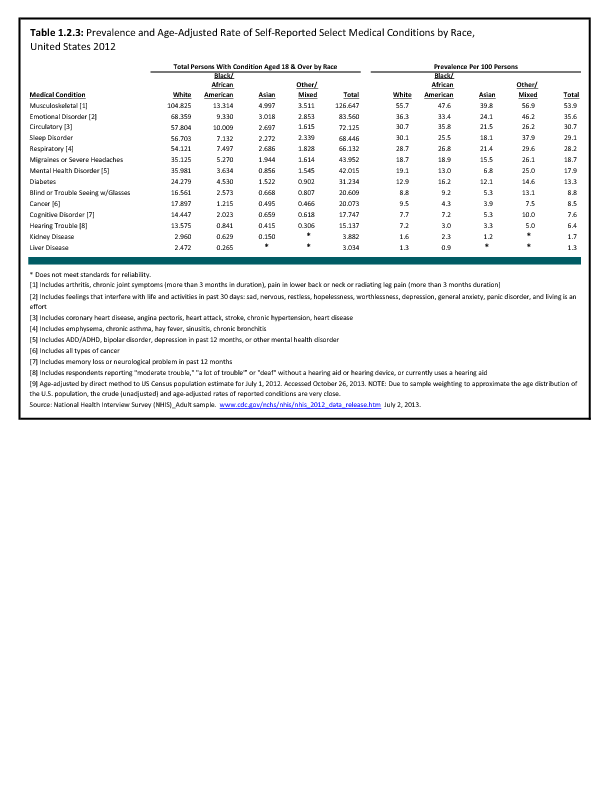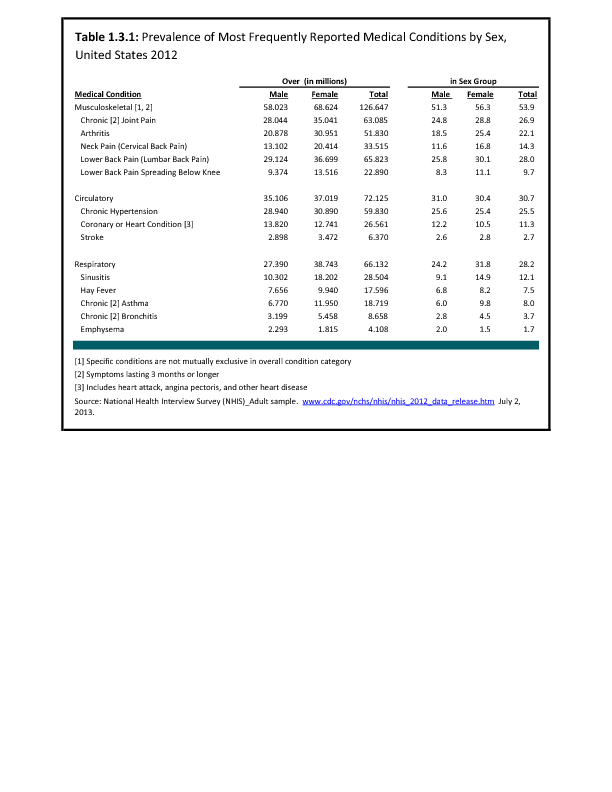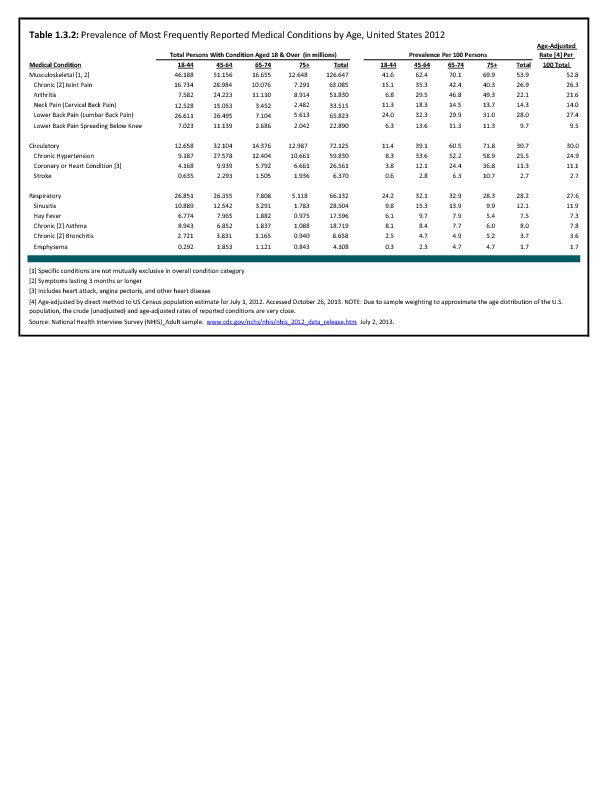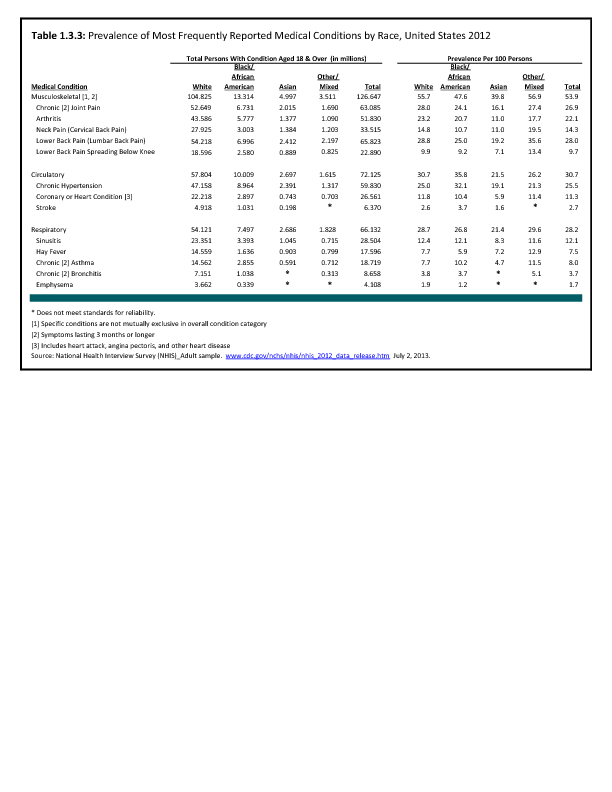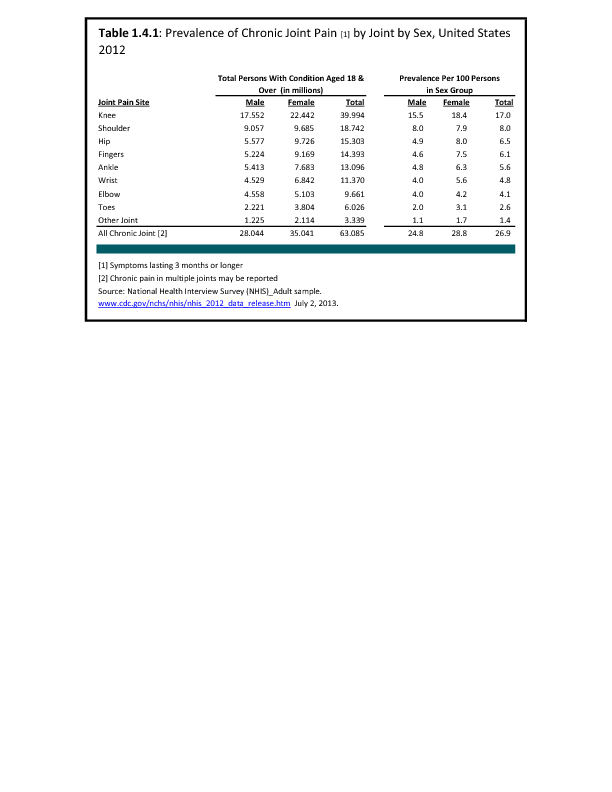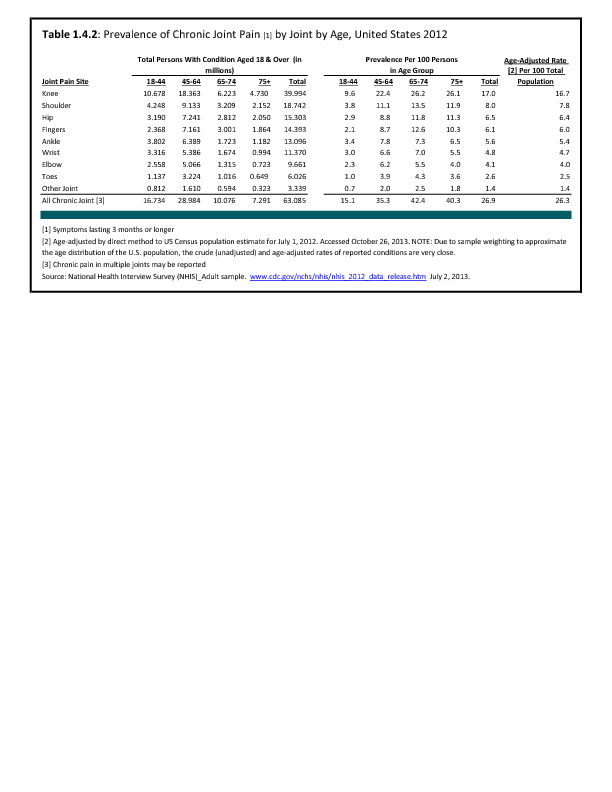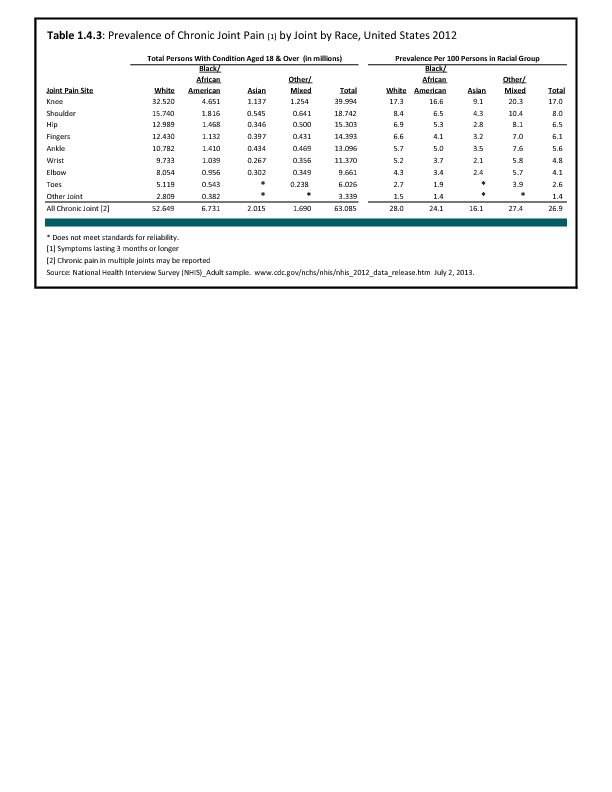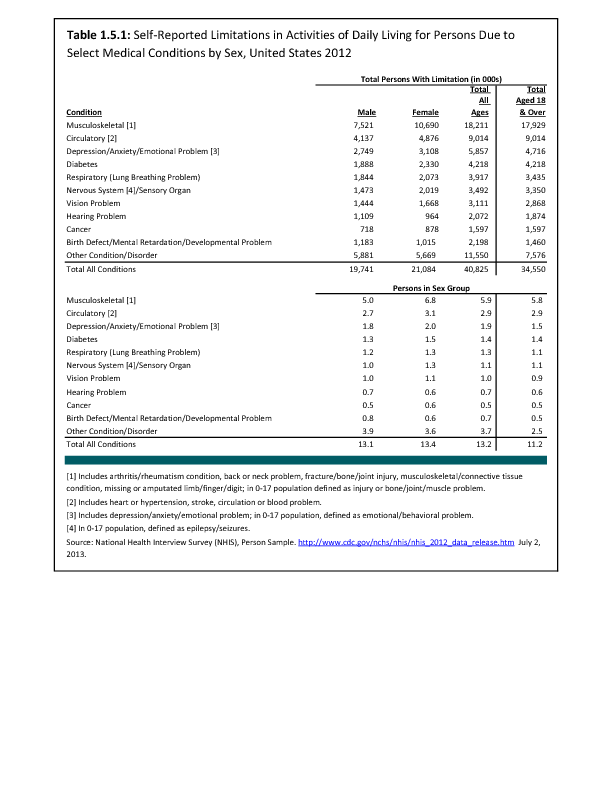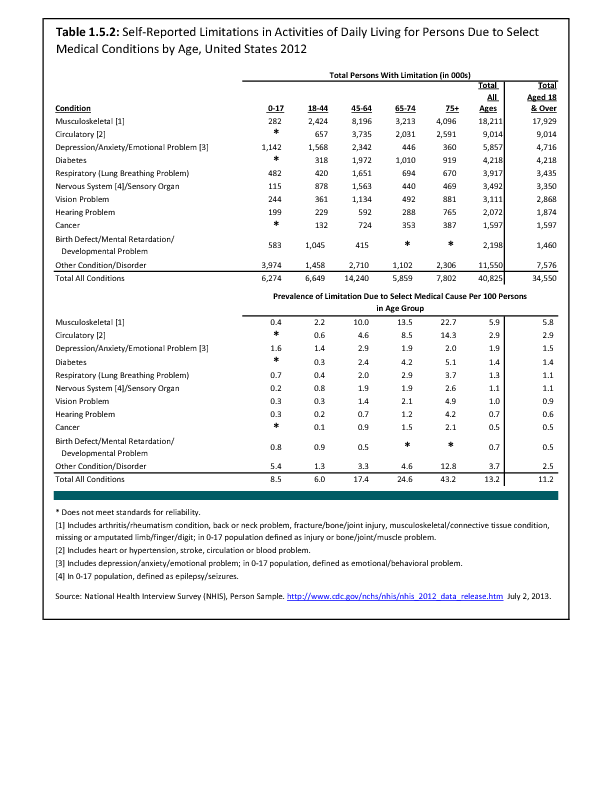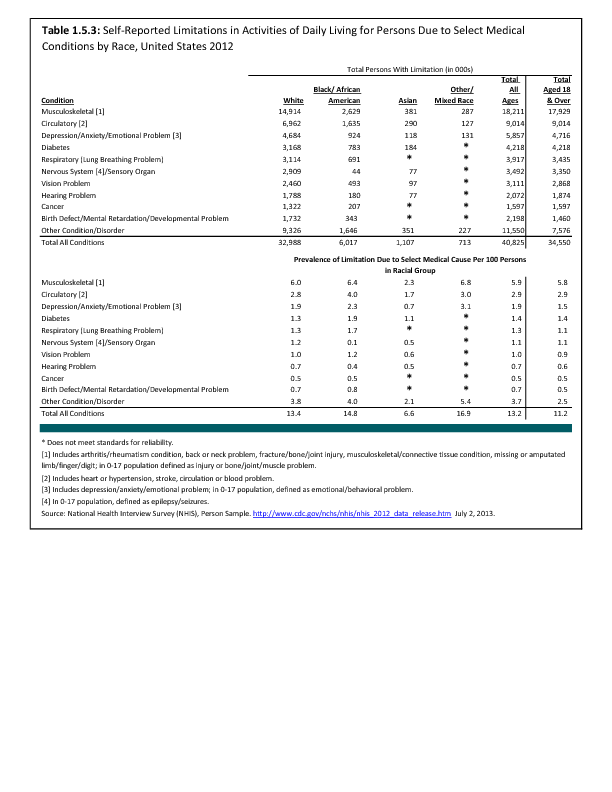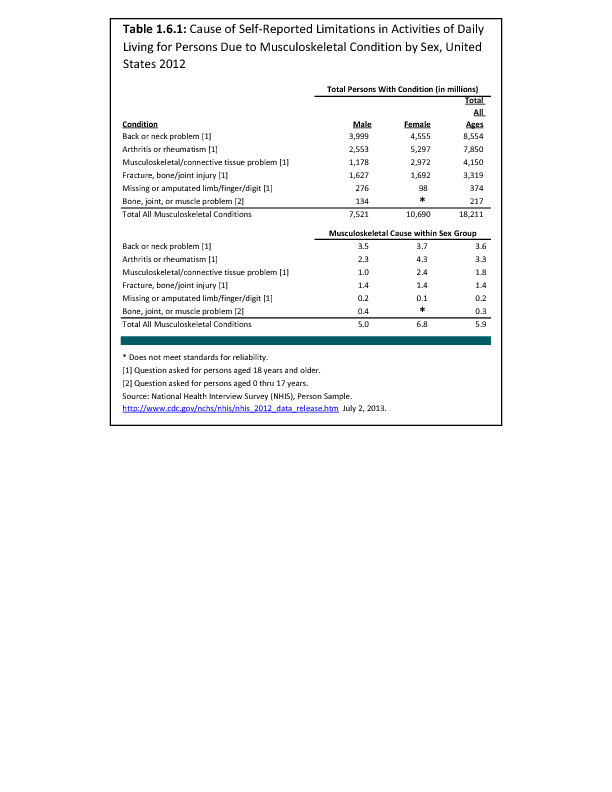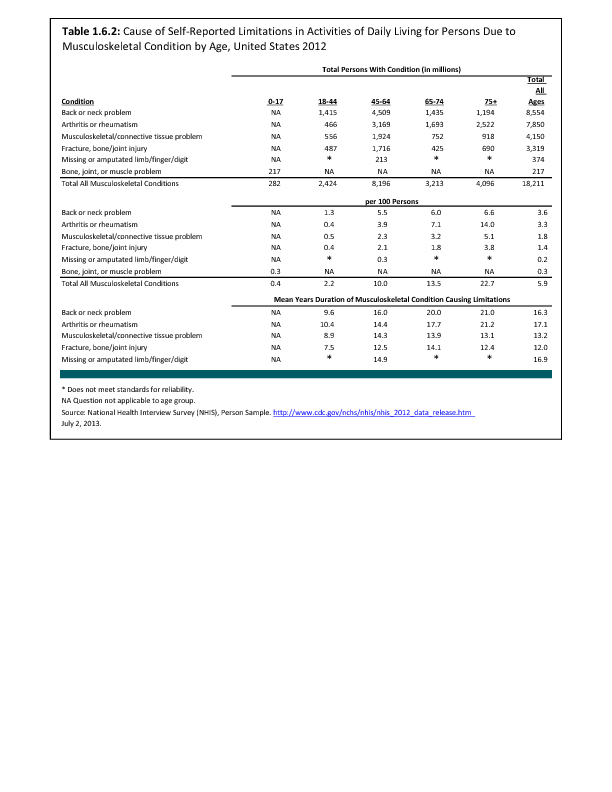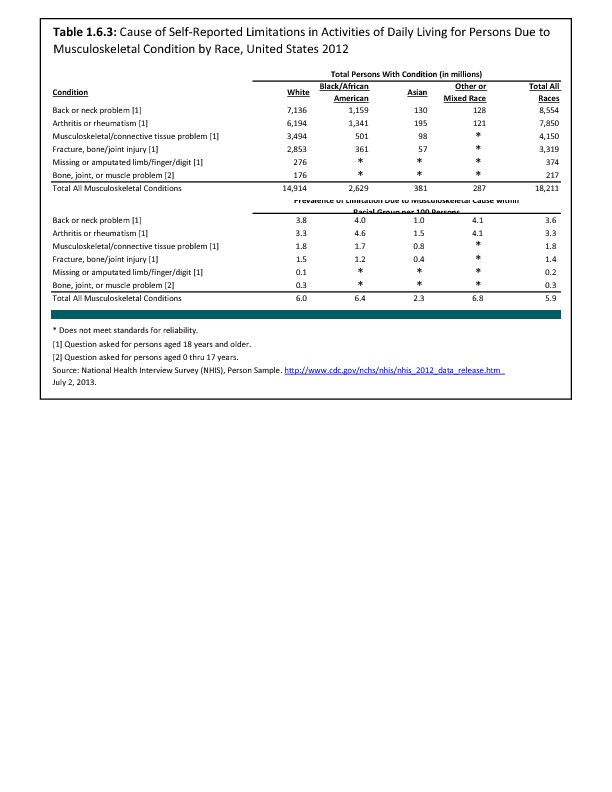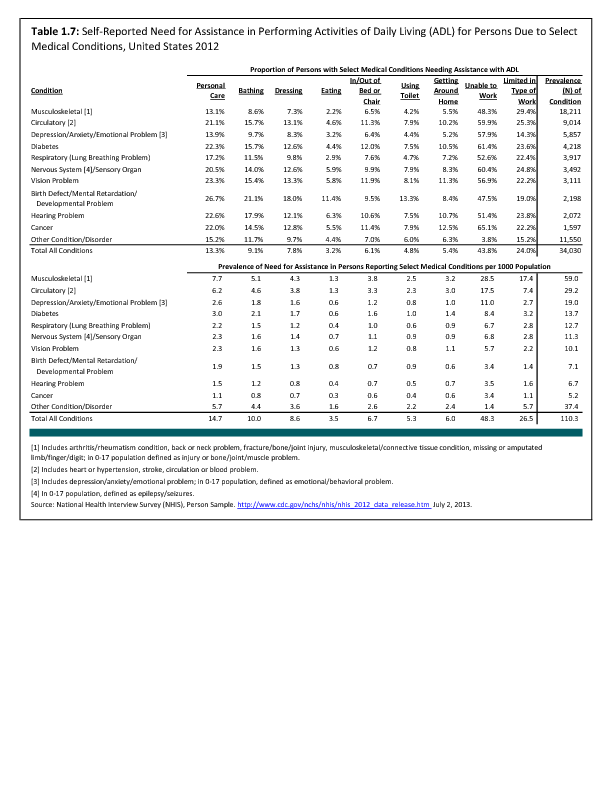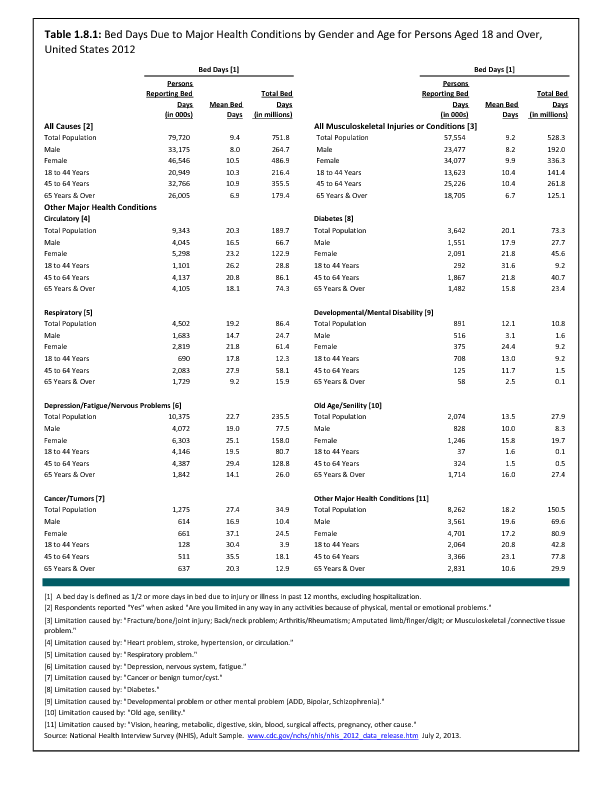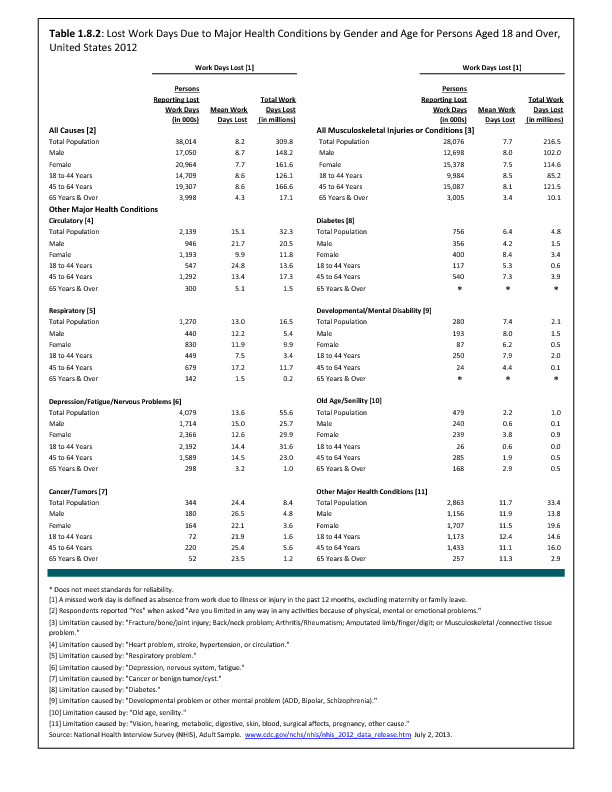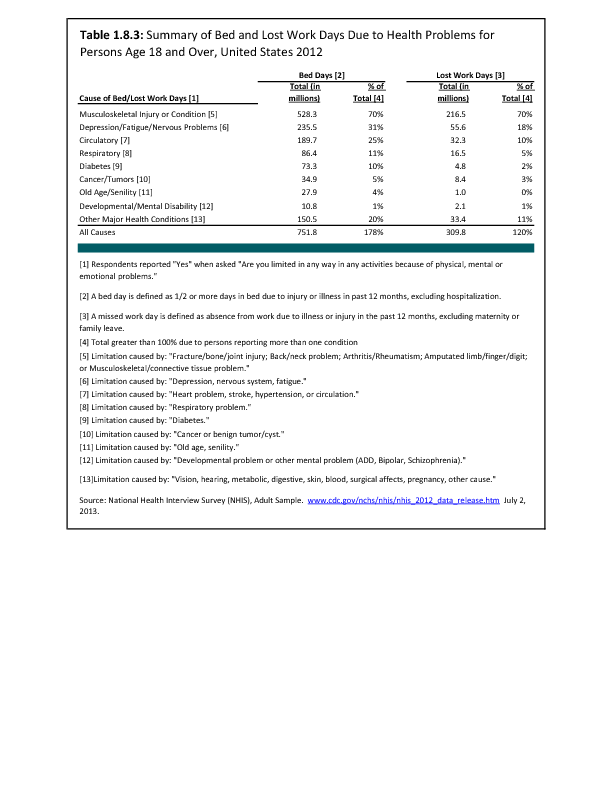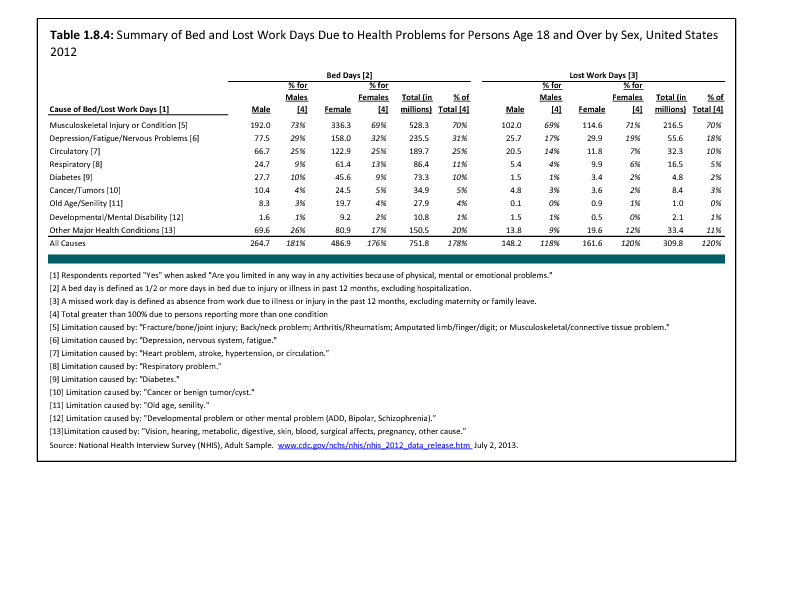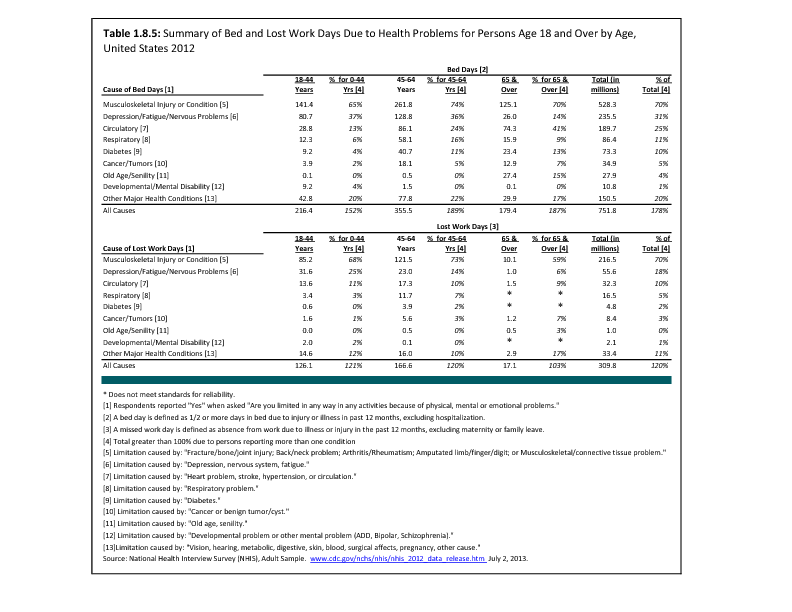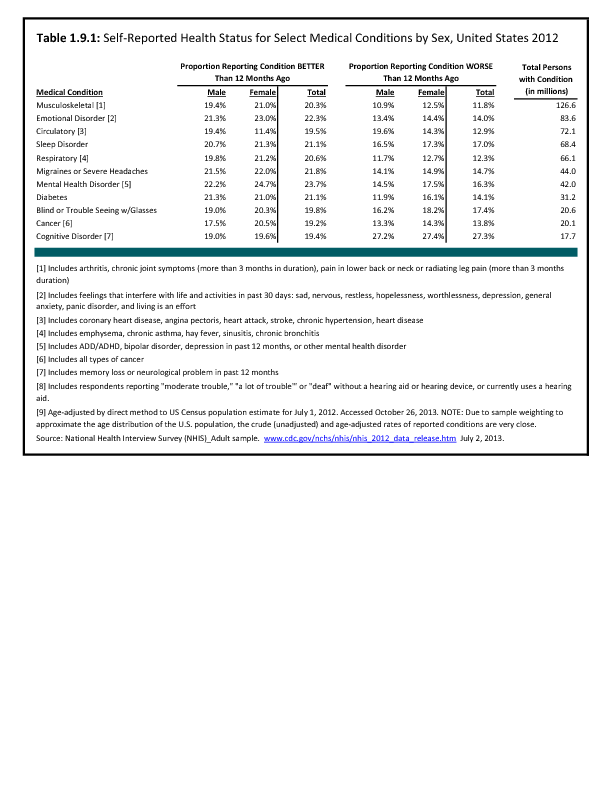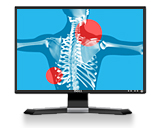I.E.0
Musculoskeletal diagnoses accounted for 18%, or 223.6 million, of the 1.3 billion medical diagnoses, included in hospital discharge records, emergency department and outpatient clinic visits, and physician office visits in the United States in 2010 and 2011. (Reference Table 1.10.1 PDF CSV and Table 1.10.2 PDF CSV)
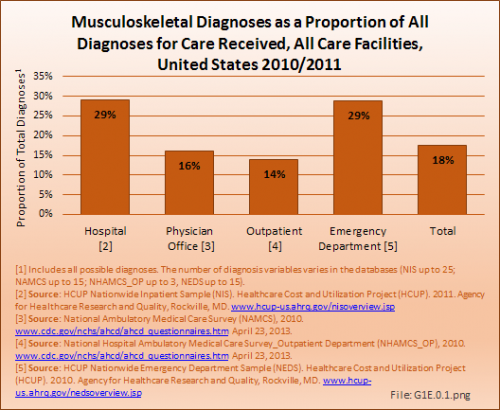
On average, each person in the United States received medical care for four diagnoses over the year, or 4,128 diagnoses per a population of 1,000. Of these, 723 diagnoses were for musculoskeletal conditions. The most common musculoskeletal diagnoses are "other and unspecified disorders of the back" and "other and unspecified disorders of joints," with 127.2 and 86.6 diagnoses per 1,000 persons, respectively. (Reference Table 1.10.3 PDF CSV)
The majority of all diagnoses and musculoskeletal diagnoses are made in a physician office. However, hospital discharges and emergency department visits are seen more frequently for musculoskeletal conditions than for health care visits for all conditions overall. (Reference Table 1.10.2 PDF CSV)
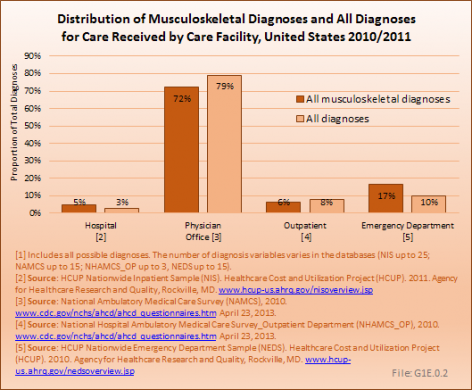

On average, each person in the United States received medical care for four diagnoses over the year, or 4,128 diagnoses per a population of 1,000. Of these, 723 diagnoses were for musculoskeletal conditions. The most common musculoskeletal diagnoses are "other and unspecified disorders of the back" and "other and unspecified disorders of joints," with 127.2 and 86.6 diagnoses per 1,000 persons, respectively. (Reference Table 1.10.3 PDF CSV)
The majority of all diagnoses and musculoskeletal diagnoses are made in a physician office. However, hospital discharges and emergency department visits are seen more frequently for musculoskeletal conditions than for health care visits for all conditions overall. (Reference Table 1.10.2 PDF CSV)

Edition:
- 2014


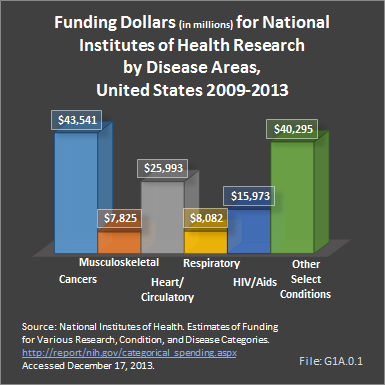
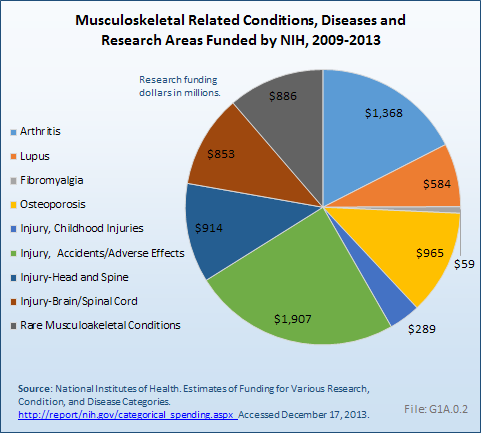
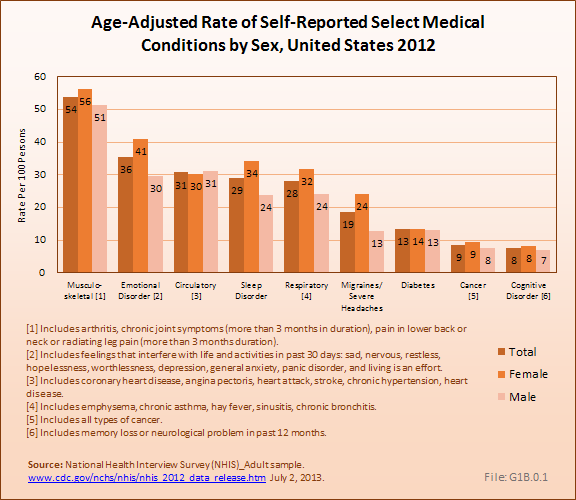
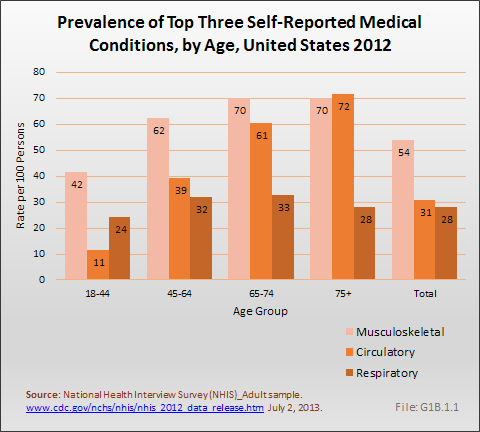
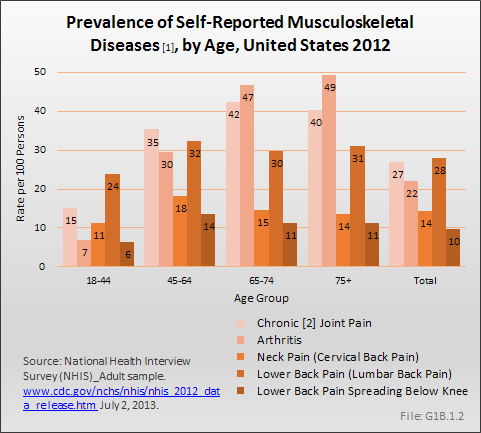

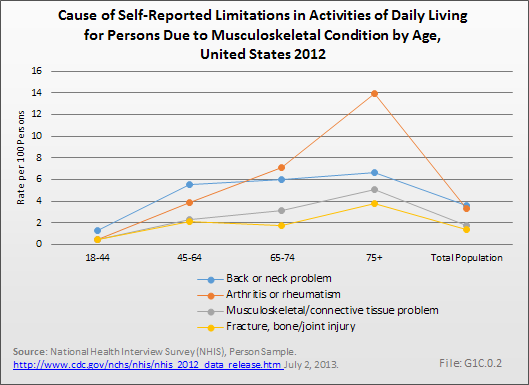
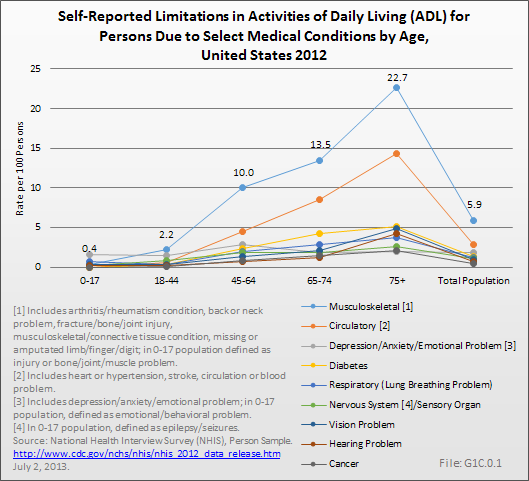
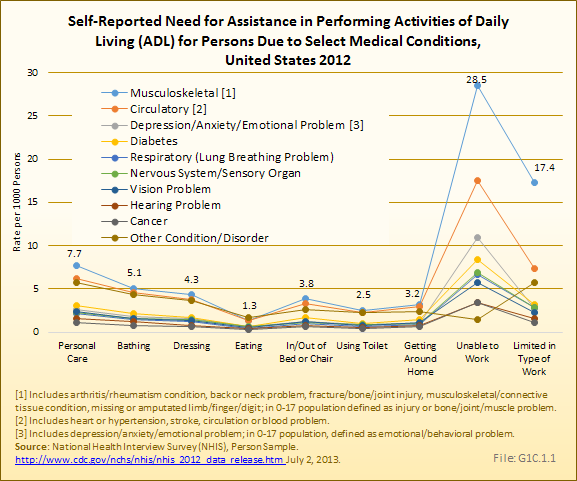
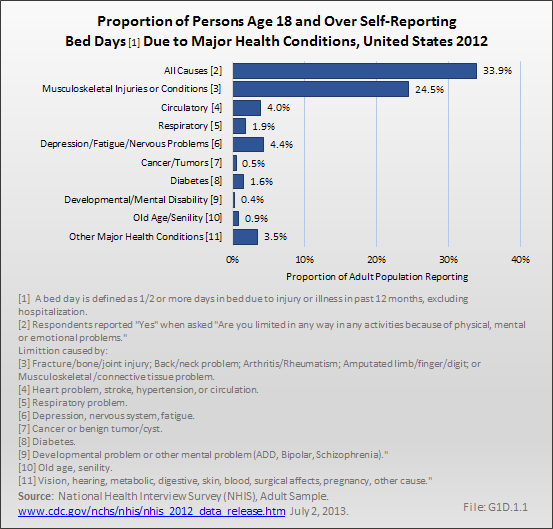
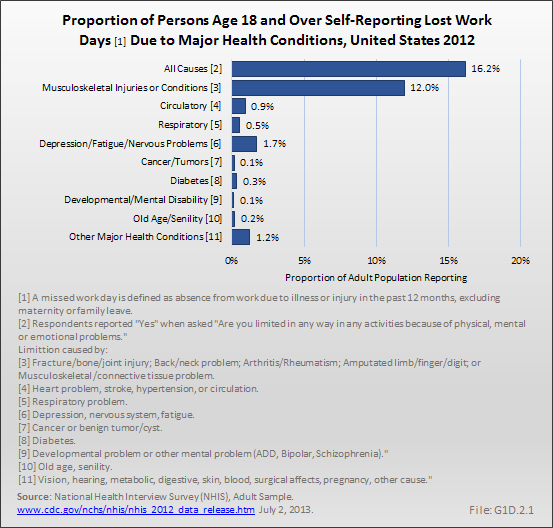
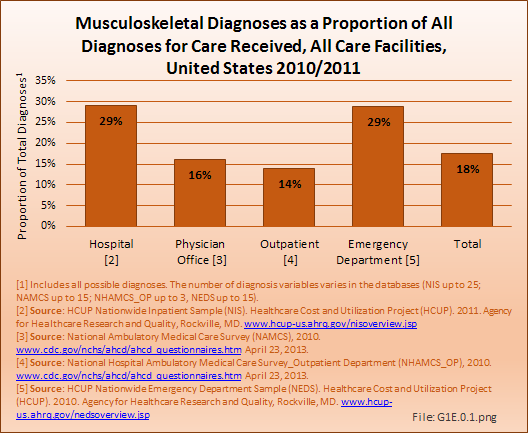
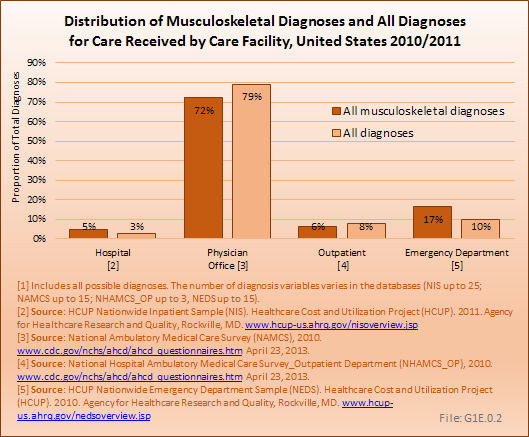
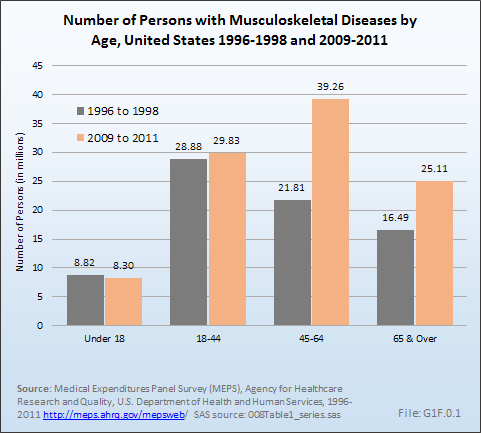
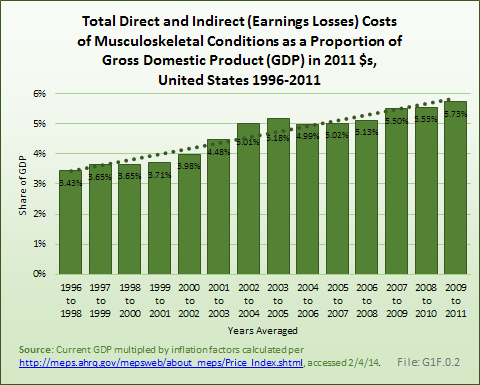
 Download as CSV
Download as CSV